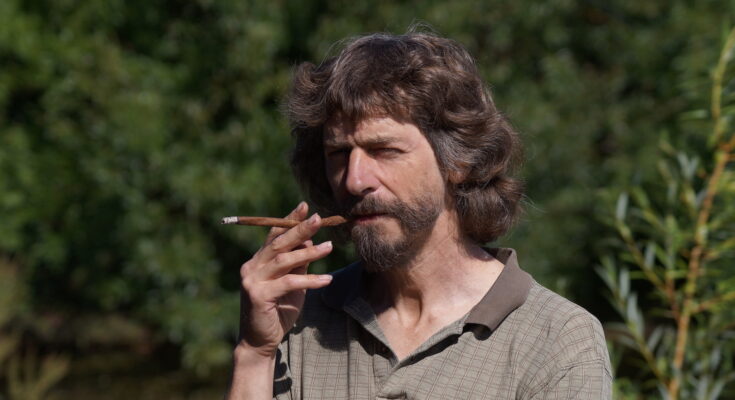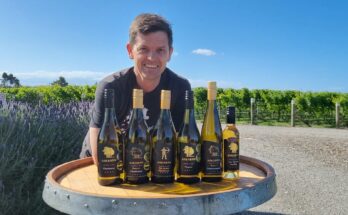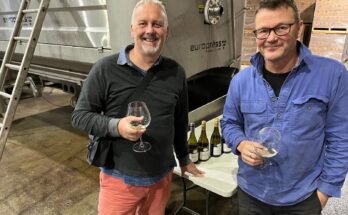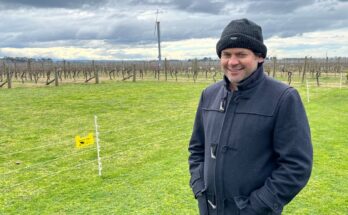Of course if you’re going around and loving New Zealand wines – you’re likely to have a list of your favourites – regions, varieties, wines, labels, vineyards, vintages and winemakers.
It takes a while to really get to the bottom of any one region – you might visit a place ten times before you’ve really got to know it, and feel that you’ve covered it in depth. I have only been to most of New Zealand’s wine regions a few times, and that means there’s still lots of ground to cover. The funny thing is though – on both times I’ve been in Marlborough in the last year, I’ve been to see one man on each occasion.
OK – I admit, it’s not that he’s so much of a legend that I go every time I’m in town (although, there is that). It’s more a case of… I had to run out halfway through a discussion first time, and head back later (eight months later). Still. He is a very interesting bloke to talk to, and a bit of a legend.
WineFolio: I’m so glad I managed to find time to see you here – this is like a single day fleeting visit to Blenheim, and I love the wines. Did you want to tell me about the road that led you to Fromm?
Hätsch Kalberer: Well, I am Swiss and my background is not winemaking, professionally – but when I was about twenty I ended up having a liking for wine. Which was quite unusual in those days for young people, so starting to put a wine cellar together. In Switzerland there was the need to do military service and in those days there wasn’t a civil option like now. So, having decided not to continue with the military I lost my permanent employment but continued doing the same as a freelancer, which was much better for me as it meant I could work for two thirds of the year. The other third I could spend travelling and I would be in vineyards – either picking grapes or helping with vintages – I did 4 vintages with a winemaker who’s wines I really liked and who happened to always needing someone extra help during vintage. So I ended up there and I learnt so much from him. Not technical stuff but how to respectfully make wine, how to not waste anything you worked for all year in the vineyard. I think the word ‘respect’ will come up again and again if I talk about wine.
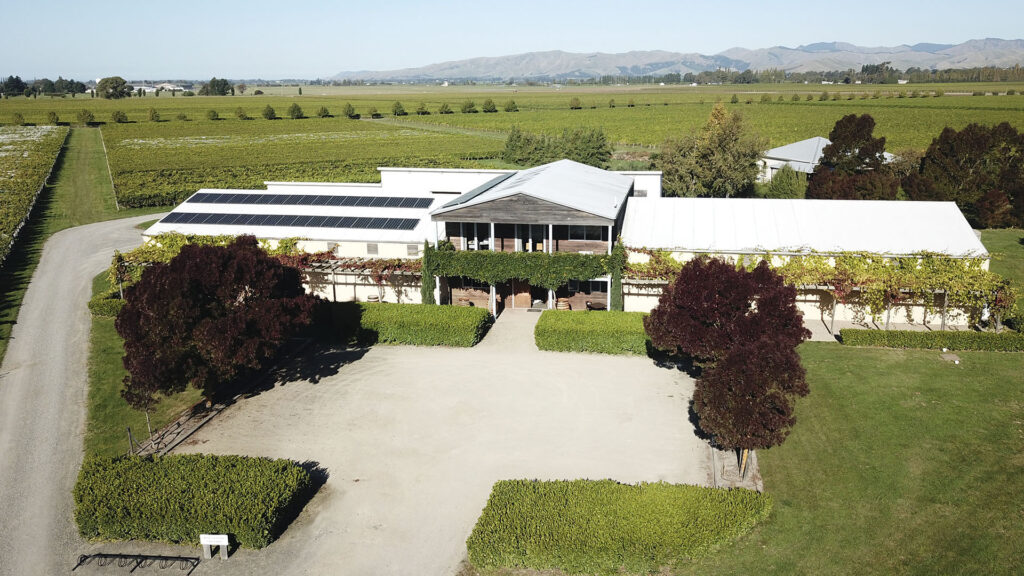
It was the Cold War in the early 80s, and I thought someone is going to do something stupid and I don’t want to be in the middle of it. The reason I came to New Zealand was that it was as far away as I could go! I was here for 4 years and went back home, packed up my wine cellar, which was a sign for my mother that I’m going to stay in New Zealand.
And so that’s my background. I was in Switzerland until I was 27 by which time I had collected quite a nice wine cellar. I thought, if I’m travelling and coming home with absolutely no money, it’s just nice to have some good wines waiting for me. I had this concept that if I’m going to drink a 20-year old Bordeaux wine, maybe eight times a year, then I need 160 bottles, and I only have to replace eight each year. It’s a nice concept. But the reality is – as James Healy from Dog Point once said – “Wine Cellars have a habit of growing”. And so it’s quite different these days.
I never had a car, or even a driver’s licence. I got a driver’s licence in New Zealand, aged 33 – because I never needed a car.
WF: When I lived in the UK, I never had a car either. I had a licence but never owned a car until I was 28. I would sometimes hire a car if I needed to drive a long distance. Strange isn’t it. In New Zealand the car is one of the most important things to a person!
HK: If I would still live in Switzerland I would get a first class rail pass. Public transport is brilliant, and when needed I would take a taxi.
In 1982 I started at Matawhero as a Cellar Hand with no academic background in winemaking at all. For Denis Irwin it wasn’t necessary that someone would have a degree – he didn’t have one either. He was more interested in an understanding for European wines styles. You need a vision that is more intuitive but avoid basic mistakes.
At the time, in the early 80s in New Zealand, there were two wineries which stood out for me, Matawhero and Te Mata. Te Mata today is still a solid company with a good foundation and they make very good wine. Do they need to be the best? No, but often they are – a Coleraine can be as good as anything. But they always kept up a deserved high profile.
WF: Looking back now, is there anyone else who possibly was creating wine in New Zealand, that wasn’t recognised?
HK: Not really, those two were the only ones I came across making wines which were comparable to good European wines. The others made at times perfectly sound wines, but nothing which had the depth and density of a Matawhero Gewürztraminer, or the quality of a Cabernet from Te Mata. There were some sporadic classic wines made for its time like the McWilliams Cabernets Sauvignon from Tom McDonald. But Te Mata put that variety on another level. People like Larry McKenna at Martinborough came in the later 80s. That’s when others started to emerge too.
I was nine and a half years at Matawhero. 1986 was the first year where I could say I was in charge of the winemaking – Denis was in Australia – and I was pretty much responsible for the vintage. I always respected Denis’ palate and important tastings and final decision were always made together, but the actual winemaking was left with me. For me it was a 9-year apprenticeship of becoming a winemaker. What was really missing in those days was good viticulture.
We had reasonable viticulture, but then the opportunity came from George Fromm, who was focussed on first growing the best possible grapes you can. In those days there was no email, so I got a letter in the mail. There was the opportunity of a piece of land with a house on it in Marlborough and the Fromms were keen to develop it into a parallel winery to their own in Switzerland. That was an easy decision for me and I thought ‘alright, I can start a second apprenticeship on how to grow grapes’.
Starting at Fromm, we just had a bare piece of land. One side of the fence was one cow and on the other side nothing at all. Just the house, which is still next door. I didn’t have experience of starting to plant a vineyard, but Mike Tiller at Isabel Estate helped me. In those days everything was three metre row spacing, determined by the size of the tractor. And we wanted to plant much closer together, like Daniel le Brun at the time. Mike had helped with that and he and I did the old-fashioned measuring out with the wire – did the first 4 blocks with the stick, going there, there, there… and in the end when we came together we were 40mm out on 3 hectares! Not so bad for being very old school.
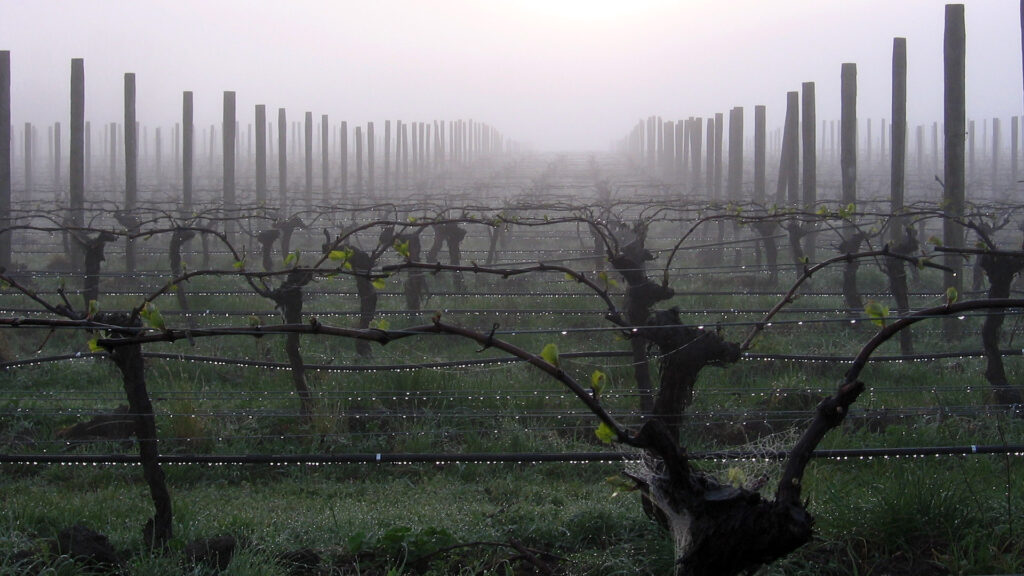
We had time, and I like having a little mountain in the hole for each plant – probably overkill – and the roots go over it so they point down. It looked very pristine. We started that way and for me it was really learning about viticulture. When we started, plant material was very hard to get. You couldn’t just say you want a thousand plants, when you can only get two hundred! So, we planted the vineyard here, eventually with eight red varieties. It was obvious that not every one would do well, but unless you try you don’t know.
We didn’t have a winery, so did two vintages up at Highfields. Bought some tanks and used their press and pump. Then we shifted all our gear – including getting a new press, which is still the same one we have now – out to the new winery at Grove Mill in 1994. Just somewhere in the corner of that massive building was our little Fromm enterprise! Then we had everything – we had a pump, had a press and we made the first decent wines.
And for vintage ’95 we had our winery built. It was a dreadful vintage – the worst vintage we’ve had in Marlborough. It was just looking for windows to pick between the rain, and then ’96 was very good, very late and the first very good vintage in our own winery. And it just went from there.
Farming organically came slowly over the next few years. I was relying on George Fromm with the viticulture, where he had far greater experience and focus than on the winemaking itself. Unlike most other vineyards, we had cover crops, and I remember George saying that when you have that you have far less botrytis issues. We were very conscientious in what we were using in the vineyard and our canopy was pretty much organic from the early 2000s, but we still used a small strip of herbicides underneath the vines.
Then came the time that sustainable winegrowing was introduced. It was basically a copy and paste from the Swiss model, and George has always been part of that. Then there was this one thing when we were audited and they said “have you got any traps for this and that? If you put some traps out you get extra points” Well we said – “we’re not here to score points, we want to grow grapes”. So it was this clumsy system and we decided it was too much work for nothing. We were doing far better than what the ‘sustainable’ was asking us to do. BioGro said to us if we could get our weed control sorted, that we were basically compliant and could get certified within 3 years. So we’ve been BioGro ever since.
We had some attempts on the biodynamic side. My partner has done the biodynamic diploma and part of her diploma was to develop a conversion plan towards biodynamics, which she did on Fromm Winery. So we had everything in place, but I have to say that for biodynamics you need to have the mindset of the whole company, right from the top. It’s not just that this is a good thing and makes economic sense. I always thought that you need to go wholehearted or don’t talk about it at all. We are proud to be organic and BioGro certified. But I always say not to talk about some biodynamic practices we may apply as it can easily create its own dynamic and soon people talk about Fromm being biodynamic.
Central Otago is now over 20% organic. Marlborough has far more organic vineyards than Central, but here it becomes a small fish in a big pond. You have someone like Dog Point with nearly 300 hectares fully organically certified. On two sides of us we have organic vineyards, and Montana is not doing too badly either.
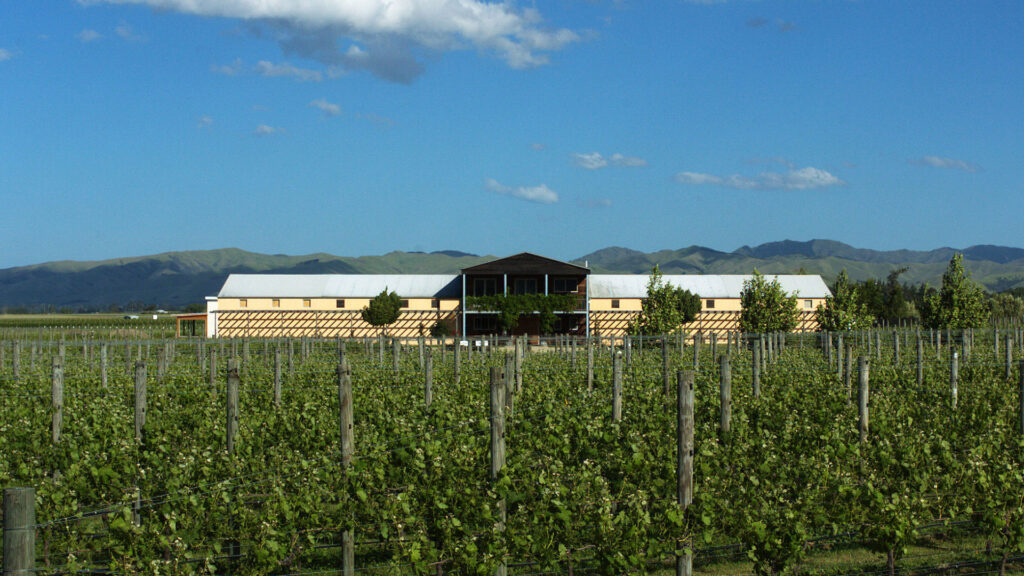
WF: If it was something that you needed to do to be part of an appellation, for example – do you think that would be an incentive for others to commit?
HK: We would be comfortable with that. It would be nice to think, but it’s just hypothetical. It is a big ask, but it would be nice if one day it could happen. Some bigger companies now are committed to it. Cloudy Bay are on track to become 100% certified in a few years, and that’s a big step. One thing that would be nice is to a full ingredient declaration – you have to declare that there is sulphur in the wine – but you should have to declare all the other things that are in the wine, just like normal ingredients labelling. I get catalogues 50 plus pages thick every year from three or four suppliers – all about different additives to wine. There are hundreds of them – it’s unbelievable. And they are all used somewhere, otherwise they would not be offered. Enzymes and tannins, which are often just flavourings in disguise, and there are so many fining agents etc.
Then of course, internationally it’s difficult – every market has their own regulations. Even if you’re biodynamic, then biodynamics in different markets have their own standards. In the end a lot rests on your own integrity. Being organic should not be market and advertising driven. If a winery is seeking publicity in the newspaper for introducing guinea pigs for organic weed control, then there is something not quite right. That the hawks subsequently ate the guinea pigs was of course not reported on the front page. It’s just silly and insincere.
WF: What about Pinot Noir – how do you see your wines sitting in the New Zealand landscape of Pinot?
HK: I think with Pinot Noir we’re blessed. We have for quite some time had a few wineries that make very classy Pinots. This applies to Chardonnay as well – my model is the wines that I like to drink the most… and that happens to be Burgundy.
To me it’s a matter of trying to create the same pedigree that they have in Burgundy, but with our terroir. I’m not trying to make a ‘New Zealand style’, whatever that means. For me, Burgundy is the benchmark, and if we are prepared to put a similar effort into our viticulture without taking any shortcuts, then we should be able to make wines of comparable pedigree, reflecting our own terroir and personality. But as soon as you think ‘we can make some smart wines, cheaper and more efficiently, with higher crops’ then you are immediately on the backfoot. Bell Hill would be the most classic example. Extremely close planted and they make wines which are different from Burgundy, but they are unique terroir wines with real identity and integrity.
WF: As the vineyard has established and matured, has your approach to what you do gone hand-in-hand with that?
HK: Definitely. Our wines are different now than what they were before. The vines are more mature, in a much better balance and we understand the vineyards better. And we matured as well, so we understand better what we are doing. It’s all of those things. You’re getting into a different comfort zone. You don’t need to experiment too much anymore.
We do samples of course from the vineyard. As the plants mature, we can pick earlier. You can see with younger vineyards, they just behave like teenagers – all energy, all growth, and no depth. But once the plants are a little bit older, we are making Pinot that averages about 13.5%, sometimes as low as 13%. And that is a massive progress, to reduce your alcohol without losing the quality and interest of the wine.
At the time when we were learning we made much ‘bigger’ wines. Recently we just started working with a new vineyard – the Wrekin, and we realised that we could pick some clones much earlier than they have ever been harvested. They were ripe and expressive, had lower alcohol and excellent structure.
WF: But I assume that you are always learning?
HK: Yes, we had some Chenin Blanc and I haven’t had that since Gisborne, so that was exciting. You just take it as it is. Leave all the variables out and just start to understand what you’re actually dealing with. The grape varietal is all we know. And then each year it’s a bit more refined. Start with the basics first and leave very little to chance. This way you get to understand your terroir and how to maximise its potential without much manipulation. We have also started making a Pinot Naturel and that was something very new for us, and we were mindful that there are many quite bad natural wines out there as you know.
WF: I like the natural Pinot that Larry McKenna makes.
HK: I have not tried his latest natural Pinot, but I like Larry and he knows what he is doing. In order for us to do this with Pinot, we started to do a bit with Malbec first, because Malbec by nature needs very little sulphur. I thought, if Malbec doesn’t work then there’s little point in trying with Pinot (smiles).
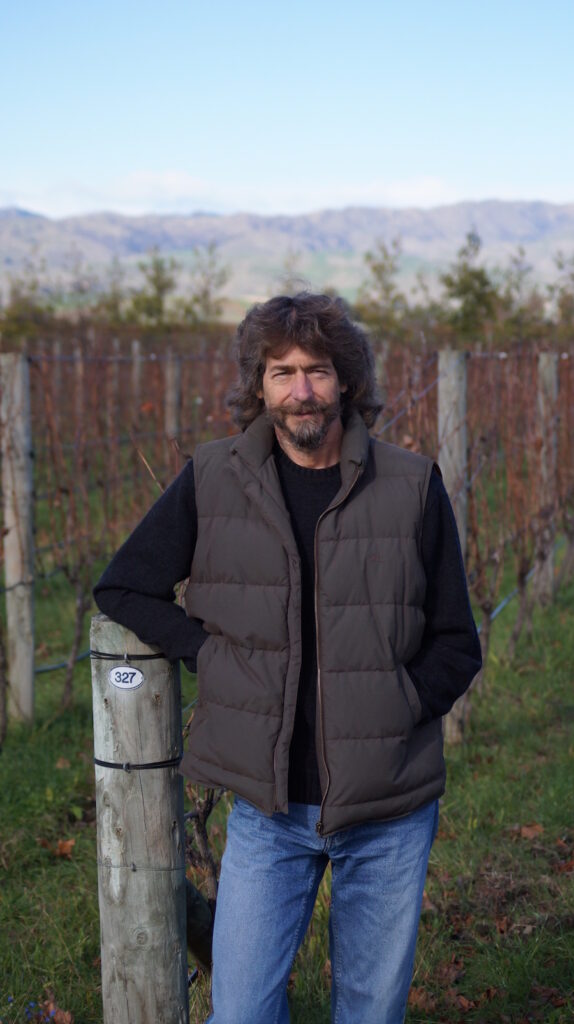
The Malbec was really fine – it has such perfume – and every year now, except 2018, could be classed as a natural wine. We don’t sell it as that because the importance is the variety as a single vineyard wine. Then the year after we did Pinot and using high technology like dry ice (laughs) – very new for us. And that’s working as well. But there again, it’s down to your own integrity, to set your own standards – because there are no official standards governing the term “Natural Wine”. However, it is generally accepted that Natural Wines should be made from organically or biodynamically certified grapes with nothing added and nothing taken out, no cultured yeasts, no fining, no filtering, just as it is. But prior to bottling a tiny bit of sulphur is accepted practice for stability as wines are often exposed to unfavourable conditions (heat, travelling) once they leave the winery. To excuse a faulty wine by saying “but it’s organic” is not acceptable for me. In the end the wine does matters.
And I always say that my prototype for the natural wines we make was the Morgon from Domaine Lapierre – one of the pioneers in Beaujolais for making organic wines. They too add a small amount of sulphur just before bottling, particularly for wines that are exported. This year we are also working with Syrah and Malbec in the same way and if successful will offer our Naturel range as a trilogy.
The other thing of course with natural wine is that you have to work with fruit which naturally has good structure and does not leave you with a pH of 3.9 or 4.0 after malolactic, yet it needs to be physiologically ripe. What worked best was the Churton Vineyard, an east facing, higher altitude site, and generally clone 10/5 and Abel work very well. 10/5 for example is quite rustic and has not got much finesse, hence doesn’t contribute much to our Fromm wines, but is perfect for the Pinot Naturel with its crunchy fruit.
WF: Are there other things that are changing? Use of oak, for example?
HK: Of all the wineries that have some recognition for quality wine, we would probably be the winery that uses the least amount of new oak. We have about 250 barrels and I might buy eleven or twelve a year. Last year we only used six. We’ve got so many good mature barrels. As soon as we are commenting on the oak in our wines, we have gone too far. We use a few old demi-muid, very useful for Chenin Blanc. They are 10-15 years old and in excellent condition. If you want oak flavour in your wines, buy wood chips, they are much cheaper. We keep the wine for a relatively long time in barrels for maturation, and we keep them cold in the cellar so malolactic is very slow. All our barrels are three-year air-dried, low toast and tight-grained. I’ve done enough trials with barrels – now I just need a good barrel.
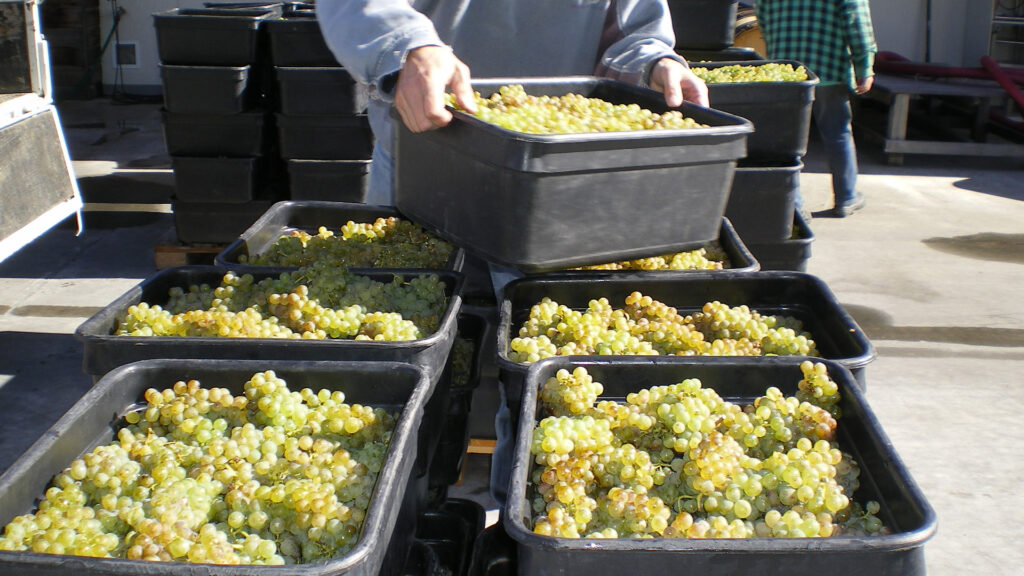
WF: What do you think of the egg shaped fermenters?
HK: Trendy, they look nice, and they probably do something nice to the wine. I’m interested in what I see in the glass. Shape does have an influence on the wine. There have been experiments, all in stainless steel with various shapes – square, pyramid, whatever. And all the wines turn out different. I know what kind of wines we like from the “old world”; so I use the same barrels that they use. Have you been in our Cellar? We have all these old barrels, but they’re in pristine condition. We look after them, keep them dry, and they are never outside in the rain and deteriorate. We value them, and if one has a problem then it will be retired and that’s when we need new barrels. Occasionally a barrel can become stale if we have nothing to put in it.
We buy the most expensive barrels with the least impact and we have them for a very long time. I respect people who have been working with the amphora for a long time and made great wines like some producers in Northern Italy. For them it is tradition rather than fashion. I’m always wary when such trends emerge in the “new world”. When wineries always photograph their “egg” or amphora in promotions, you wonder what the motivation for having these is in the first place. Of course a stainless steel tank, holding a wonderful Riesling is less sexy, equally a warehouse full of barrel racks. Genuine users of alternative vessels I always respect.
WF: I wrote something not that long ago about cult wines. Thoughts on that? Do they exist? Can they be created?
HK: Well, they do exist I guess. Some people want to make a cult wine. For me there are a few wines which I would have no objection to be called ‘cult wines’, but there is also history going with it. One of which is Quintarelli in Italy. That person in Valpolicella made wines that were so far ahead of its time. Every bottle I ever had was something very, very beautiful, if they were the basic Valpolicella or a profound Amarone. Château Rayas is another one, in Châteauneuf. I have some of these wines in my private cellar and I don’t think I will ever drink the last bottle because they are like good spirits in there, guardians for what matters in wine. Even though I rarely drink Sauvignon Blanc, I did buy a wine from the late Didier Dagueneau, a wine legend from the Loire, for the same reason. I think the term “Cult Wine” is mis-used. The people who are associated with true cult wines are often quite humble and don’t like these descriptions.
In America you have all these cult labels popping up. They are literally ‘Screaming Eagles’, lots of self-importance. You can pay thousands of dollars and I have no doubt they are of high quality. Cult status for me has to be earned, it’s not something you set out in your business plan. I am very selective for what wines I spend this sort of money.
WF: What do think might be next for New Zealand – what’s our next big thing?
HK: I think Sauvignon has its place. There is now a good acceptance that ‘green and grassy’ is not necessarily what is the greatness of Sauvignon. And some people making better and better wines with that grape. The danger is just the way it’s sold overseas in bulk and the brand getting bastardised. How can you control what’s happening if it’s sold in bulk to a supermarket chain somewhere in Holland. Pinot is clearly the most exciting red grape for New Zealand because it does have a degree of refinement and finesse that is rarely achieved outside of Burgundy and cannot be produced cheaply in a hot climate. I can’t see a new big thing, but many interesting and exciting new varieties that find a deserved niche in the market.
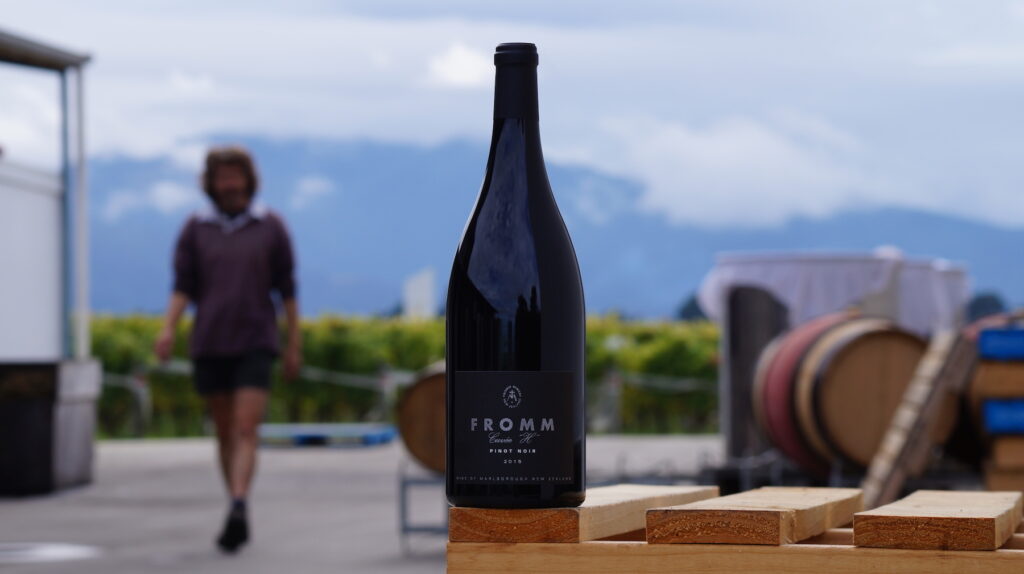
WF: And that understanding that New Zealand Pinot is not just Martinborough and Central, but the regionality is exquisite – from Waipara, Central Hawke’s Bay and Marlborough too.
HK: I’m always like an ambassador for Prophet’s Rock (laughs) which I think they just do wonderful things there. That is a different level to what, say, Central has done in the past. There is also a maturity and people involved are very much taking inspiration from Europe. Also, the collaboration with François Millet – those are very positive things for me.
WF: Do you have a personal style preference?
HK: As a broad generalisation, I like the subtlety, texture and understated density of good European wines. Interesting too, if I taste a wine in the Cellar with people it tastes different then when you take the wine away. Even just the smell of the cellar makes a difference. The air is saturated with this beautiful wood in a high humidity environment.
If the wine looks OK, sometimes I take a sample home and see if it’s OK there, drink it with dinner, and see if I enjoy it enough to have more. Noone drinks wine the way we taste it in the cellar. The wine has to perform in everyday drinking situation. Sometimes you just take a bit of acid out, that lifts the pH, the wine becomes less aggressive and it’s a more enjoyable. The biggest criticism in all those workshops I’m going to – especially with New World wines – are two things, too much oak and too much acidity. And that’s almost always winemaker-derived. Many use more oak or left/added more acid than they needed. And as a result you have wines that have an acid based, crisp firmness and they jump at you, and many people appreciate this.
WF: Do you think that’s a New Zealand style – I often hear that it’s part of our ‘style’
HK: I think it’s a style that is wine school derived. They want to be in total control, dislike for example wild yeasts and are very focussed on pH. I’m also focussed on pH but not to the detriment of palate feel and textural qualities.
Then you compare them with European wines and they invariably have different texture. Even higher acid wines, like Muscadet, Sauvignon from the Loire – they have a different balance. They don’t have this acid attack. A much lower pH giving more of a mouth-drying textural balance without the need for high acidity. Look at Chardonnay. Most Chardonnay in New Zealand still have more acidity than the Burgundians have. But they also have a higher average pH. And, I can taste the acid, leaving this tingling sensation in the aftertaste. Compare this with a good, firm, tight Chablis with this mouth drying yet textural aftertaste, where the balance is pH, not acid based.
But it is a hell of a lot more difficult with viticulture, and we need the right sites, to have a wine that has good tension and drive but is not acidic. Chablis can often have less than 5 grams of acid yet it’s so tight. I analysed a lot of Chardonnays in the earlier days, and the common theme is that the New World wines have higher acidity and at the same time a higher pH, and in most cases they still have a touch of residual sugar – even if it’s just one or two grams. It’s that sweet-sour balance.
We love Chardonnay, but there’s very few New Zealand Chardonnays I enjoy drinking as the majority are much more on the acid side. I’d much rather have a simple Burgundy. Not spending a fortune. Or a nice Aligoté from a good producer. They are not in your face. They are tight yet textural wines.
I know you did an article on Chardonnay with Michael, who I respect very much. Some of his Chardonnays are amongst the few that I do enjoy drinking. I’ve tried some very good Felton Road too. Chardonnay will always have its place, even though it’s less fashionable today. As with Pinot, Chardonnay is also a grape that at its best becomes the vehicle for expressing terroir. We certainly see this up with the Clayvin vineyard. To me that is one of the great sites for Chardonnay.

